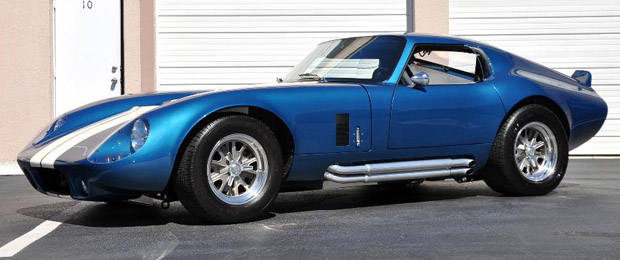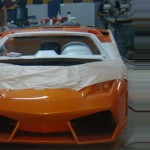 It’s interesting to note that for all of Ford’s success in closed Grand Touring racing in the late 1960s, it actually began on a downbeat note in the early 1960s.
It’s interesting to note that for all of Ford’s success in closed Grand Touring racing in the late 1960s, it actually began on a downbeat note in the early 1960s.
Right around 1962, Carroll Shelby, already a successful road racer himself, and Ford tried to work on a Grand Touring body that would compete with the Ferraris of the world that were dominating not only road racing but also Grand Touring racing circuits.
At the time, if you were following road racing at all, it seemed like the name Ferrari and racing were inexorably linked as both open and closed versions of their cars won enduro after enduro such as the 24 Hours at LeMans, Sebring and others.
American manufacturers tried but ended up either working with European manufacturers or, quite often, just left it to someone else to take on the Ferrari crew.
The Shelby Daytona was actually the forerunner of the later – and highly successful – Ford GT40.
The AC began life as a postwar (World War II) British product of Bristol AC Cars, a specialty carmaker. Their specialty was road racing. The original powerplant was a Bristol straight 6 that was actually based on a pre-war BMW design.
The body that Bristol AC used was an open cockpit two-seater that was virtually hand-built from the tube frame through the aluminum body panels. By the early 1960s, Bristol AC could see the handwriting on the wall and they knew their vehicle was just not competitive anymore.
Contrary to common opinion, this wasn’t the end of Bristol as the company asked for and received permission to use Chrysler’s 331-cubic-inch V-8 as their powerplant. However, that arrangement didn’t work out, but another did, namely Ford. Bristol AC received permission from Ford to use the 2.6-liter Ford Zephyr straight six (a good engine that was de-stroked and later used in the first Mustangs and Mercury Comets) in the Bristol AC.
This is where Shelby get into the picture as he wrote to Bristol and asked if they would build him a car that would run a V-8. They readily agreed and it was then up to Shelby to source the V-8 engine.
He first went to Chevrolet. That automaker did look at his request but decided it did not want any competition for its popular Corvette so it turned thumbs down on that notion. Having an ace up his sleeve, Shelby turned for Ford, which happened to have a brand-new ace up its sleeve. Ford was experimenting with a thin-walled design 260-cubic-inch V-8 (Hi-Po) engine and that was the ace up Ford’s sleeve which it turned over to Shelby and the effort that was to become the Shelby Daytona began.
Working on both side of the pond, AC engineers fit the new 261s in a pair of Bristol bodies and made sure all of the connections worked. The bodies, sans engines, were then sent to Shelby’s California shop where the real work began.
One good thing that came out of the matchup of Bristol and Ford was that the Zephyr flat 6 gave them the legroom, if you will, so they could drop in the much more powerful small-block V-8. The one thing the front end lacked was the beefiness that it needed to handle the 261. Indeed, they had re-engineer just about the whole front end, right down to the tie-rod ends to make things worked and that included the transmission.
When they finished they had their first open air roadsters which became the Shelby Daytonas and carried the banner against Ferrari before the GT40 appeared on the scene. Indeed, the Daytona was the mule on which much of the early GT40 work was done.
In many ways, then, the original, Shelby Daytona kitcar was the Shelby Daytona itself.
Image: drivingemotions.com






Leave a Reply
You must be logged in to post a comment.